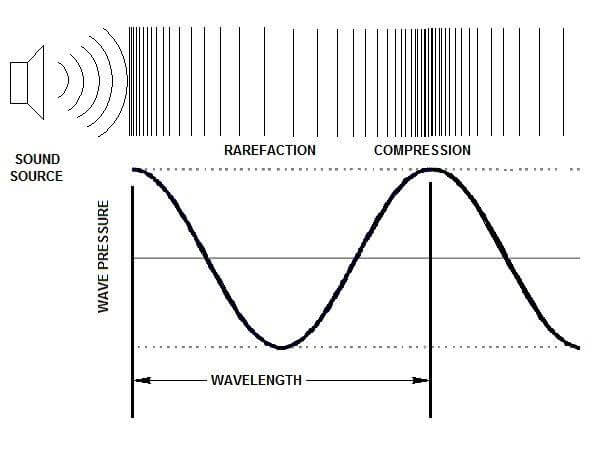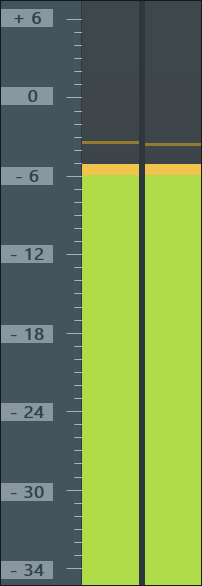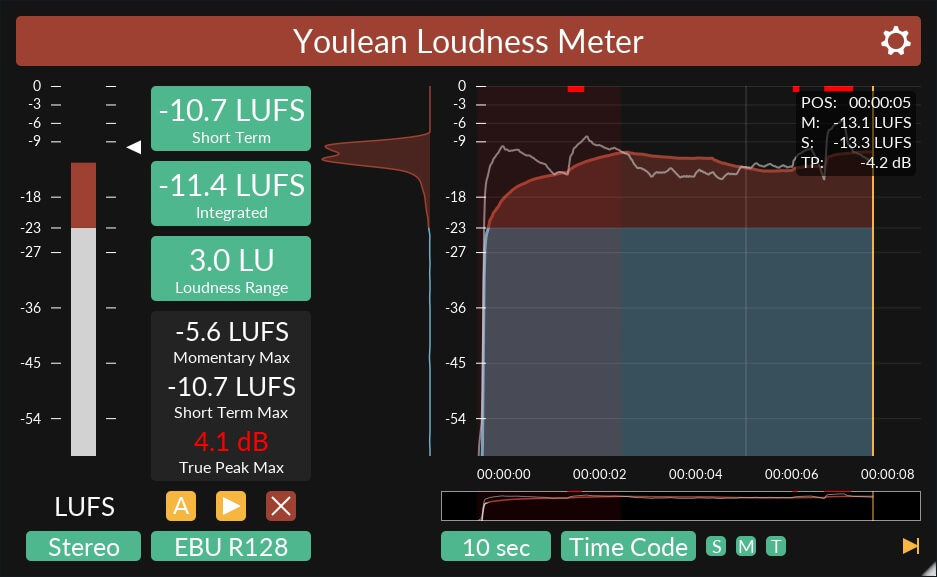How Do I Measure Sound Pressure Levels (SPL) in My Music?
What is Sound Pressure?
Sound pressure is the variation in atmospheric pressure caused by a sound. If you have a soundwave traveling through a room, the air pressure will change as the soundwave travels in every direction and consumes the air in the room.
Sound pressure is the pressure measured within the wave relative to the surrounding air pressure.
Sound sources cause vibrations in the air. These vibrations travel through the air, into your ear, and cause your eardrums to vibrate. If a sound has more pressure, the air vibrates more and causes your eardrums to vibrate more… making you perceive the sound as louder/having a higher sound level!

Mixxed Mixer Tips
What Are Buses, Aux and Send Tracks?
Difference Between Gain and Volume
Top 5 Metering Plugins to Masterfully Improve Your Tracks
Sound Pressure vs Frequency? What Are Compressions and Rarefactions in a Soundwave?
As mentioned above, sound pressure is the pressure caused by vibrations of a soundwave when compared to the pressure around the soundwave. The louder the sound, the bigger the pressure.
Frequency, however, is the distance between the individual waves of the soundwave. The closer the waves, the higher the frequency.
A soundwave is a longitudinal wave, so the vibrations are parallel to the direction of the wave. Longitudinal waves demonstrate compressions and rarefactions. Compression is an area of high pressure and rarefaction is an area of low pressure. Pressure within a soundwave moves in the same direction as the sound particles, so left to right.

What is a Sound Pressure Level (SPL)?
Sound Level = how loud the sound is
Sound Pressure = variation in air pressure caused by the sound
SPL = pressure level of the sound
We measure SPL’s in pascals but then convert them to decibels (dB). These measurements are important because they give us numerical data to work with when evaluating the sound pressure in our music, at our gigs, etc.
Sound pressure levels double in value every 3 dB. If your lead synth registers 60dB on the decibel scale, but you raise the gain to 63 dB, you’ve doubled the sound pressure level it exerts! Raise the gain another 7dB to 70dB and you’ve doubled the loudness of the synth altogether (+10dB doubles the perceived volume of a sound) and multiplied the SPL by 10!
How to Measure the Sound Pressure Levels in My Music?
You’re probably used to using a peak meter – the two bars that jump up and down as your audio plays out in your DAW.

However, there is an issue with these if you want a true reflection of the loudness of your music. Peak meters don’t take into account how humans perceive sound. It’s possible for audio to reflect differently in these meters compared to how you actually hear the audio. Usually, it’ll sound louder than it looks.
But there is a solution! LOUDNESS METERS like the free plugin YouLean Loudness Meter, developed by YouLean in the KVR Developer Challenge.
READ MORE: Download 37 Free PLugins from the KVR Developer Challenge

Loudness Meters analyze audio by taking into account duration as well as frequency. Volume is loudness over time, and humans are sensitive to some frequencies more than others. This means loudness meters give a more truthful representation of how loud the sound actually is. Loudness meters represent sounds, that we hear as loud, as loud. Crazy, I know!
Loudness Unit (LU) is the unit of measurement, and even a change of one LU is noticeable to your ears.
Loudness meters allow you to actually see what you’re hearing. By giving you this better picture of your audio, you can mix down with your headphones in environments that aren’t so perfect (like a noisy bar). It doesn’t matter how well built your headphones are for this task, you won’t be able to hear the full spectrum that your audio is coloring. Loudness meters help cover this for you because you can trust that what you’re seeing is what you should be hearing.
So, when you’re curious how loud your Mixxed samples really are you can put a loudness meter on your mixer channel and assess it accurately!
How to Measure the Sound Pressure Levels in a Room?
For this, you need to measure sound pressure in the physical realm. Use a decibel meter. This is a sound pressure level meter, but some like to call it a sound pressure level microphone… but we should note that soundwaves can’t sing.
Sound enters the meter through the microphone, and the meter converts the signal into electrical data to measure the values of the sound. And, just like magic, it displays the value as a decibel (dB). Sound pressure meters allow you to locate high sound pressure sources, which allows us to measure pressures at live events to make sure we’re not going to damage the attendees’ hearing!
It’s worth noting that there are two classes of decibel meter – Class 1 and Class 2. Each has its own tolerance towards sound pressure.
A class defines a decibel meters’ accuracy in line with international standards such as IEC 61672-1:2013. There are two allowable tolerances within these international standards – Class 1 & Class 2 – where Class 1 is more accurate than Class 2.
At lower frequency ranges, tolerances are wider. At higher frequencies, tolerances are narrower. At the highest extremes of the frequency range, you can expect Class 1 to have a more accurate response as it has a narrower tolerance.
READ MORE: Noise Floor: What is it?
